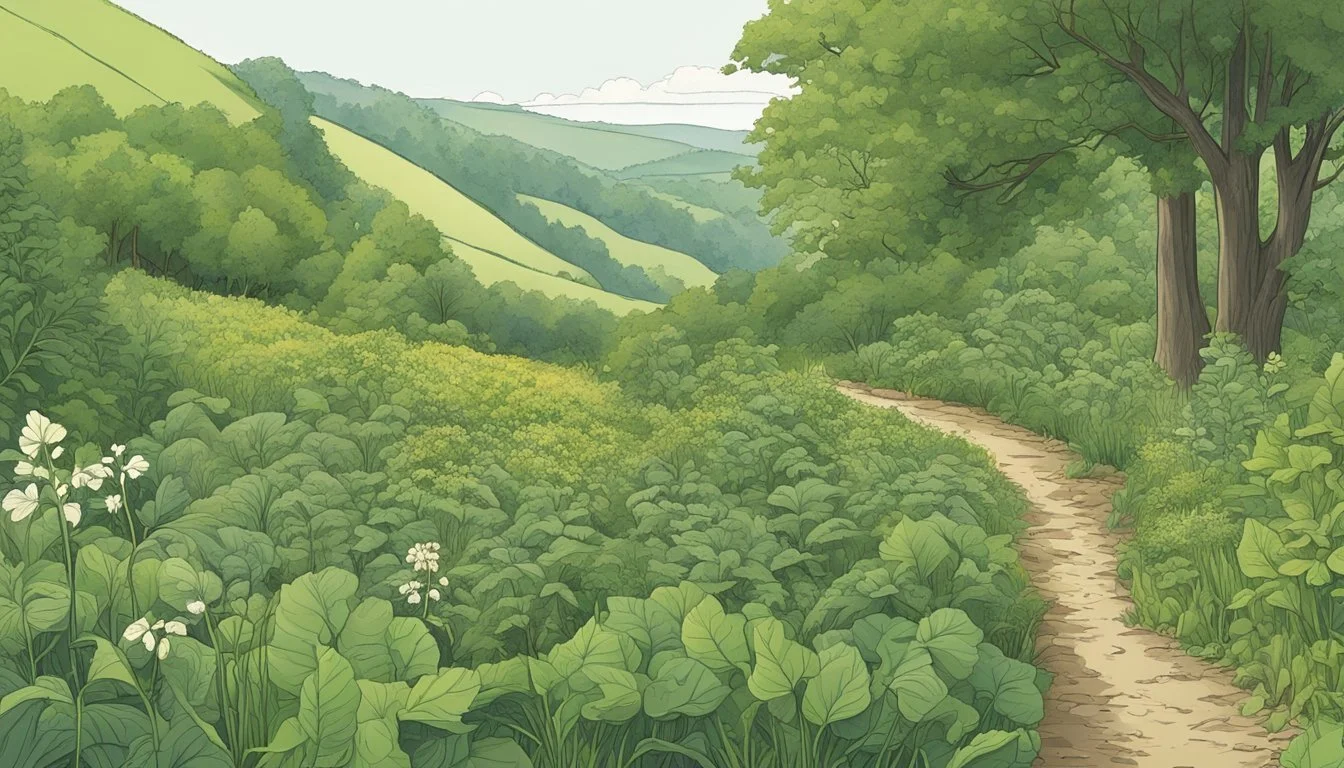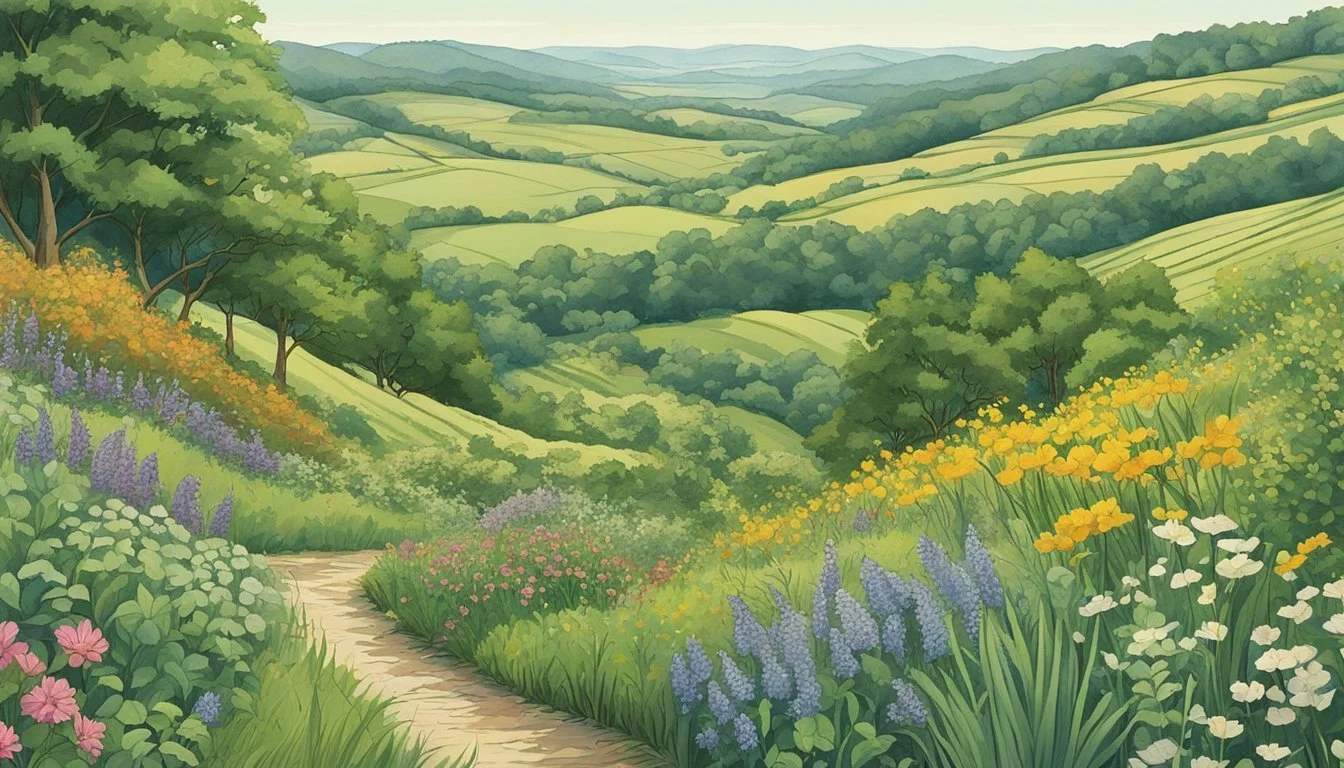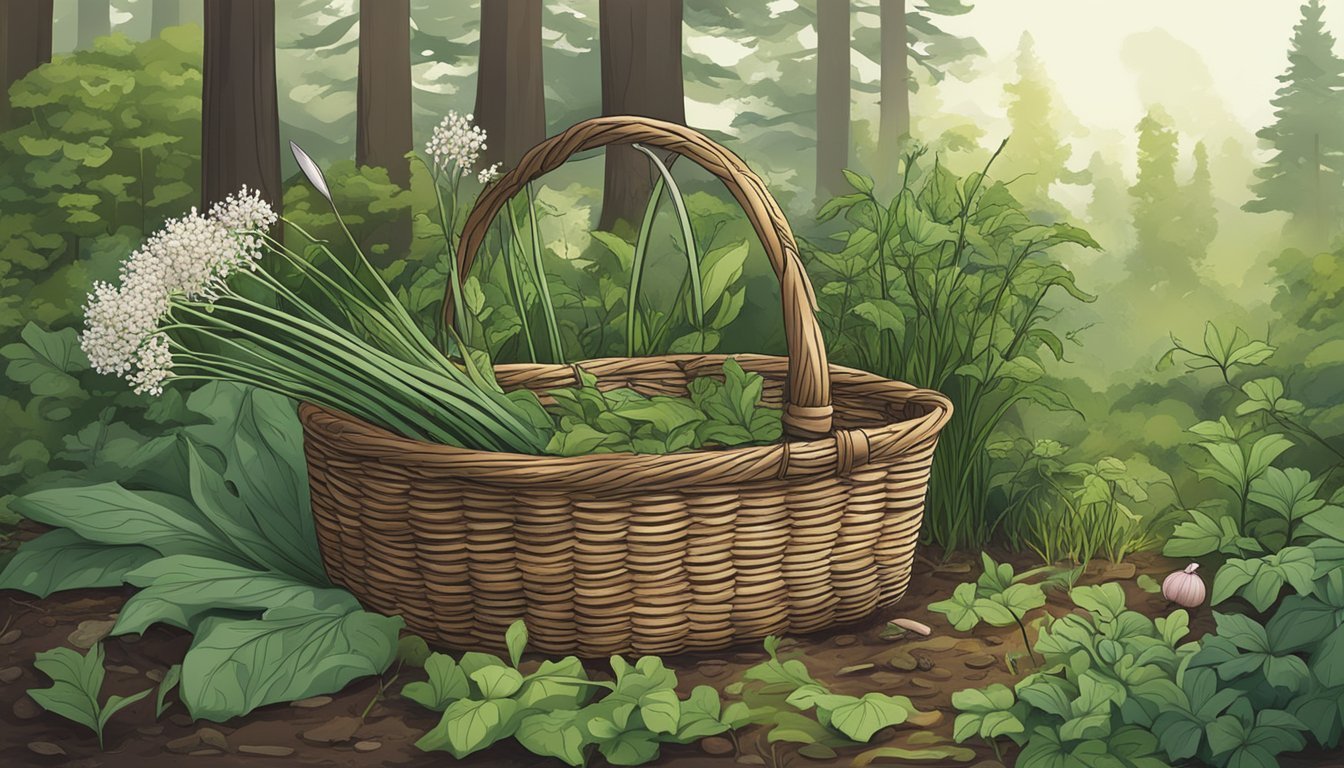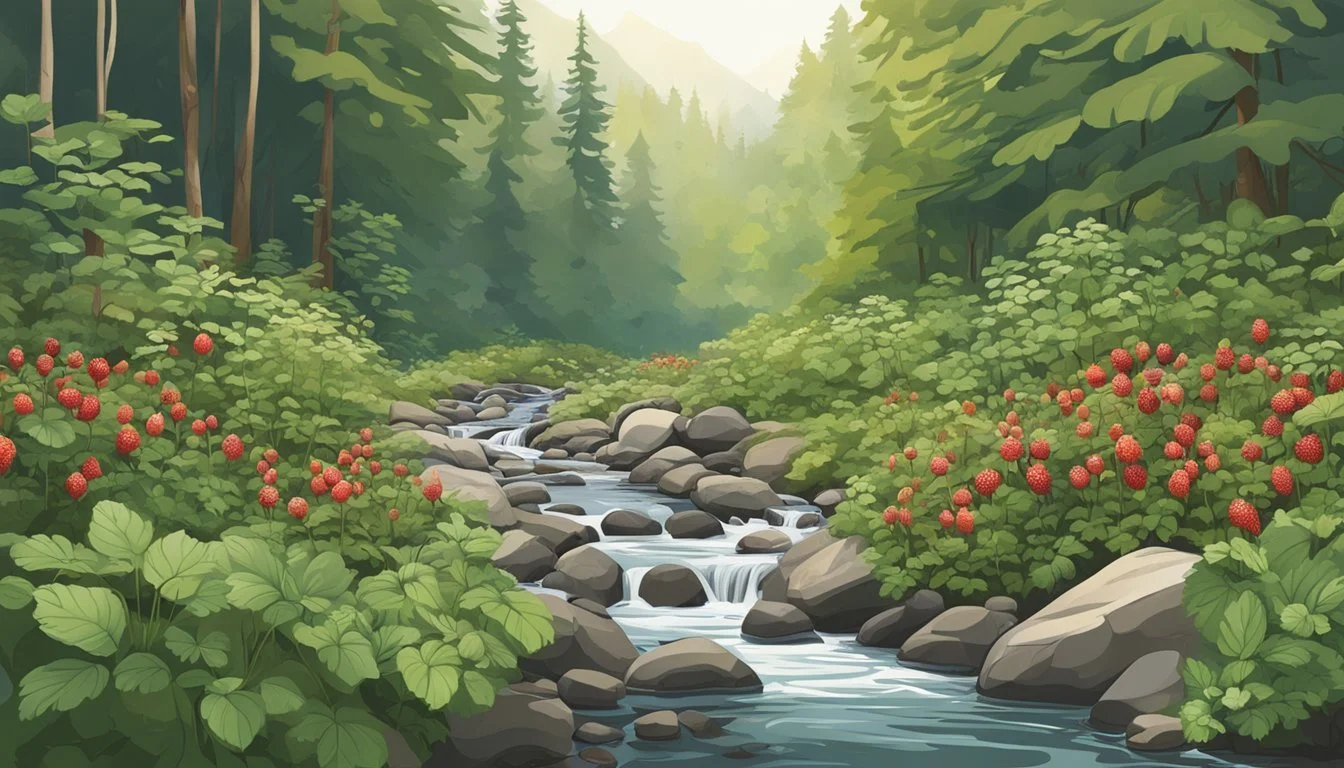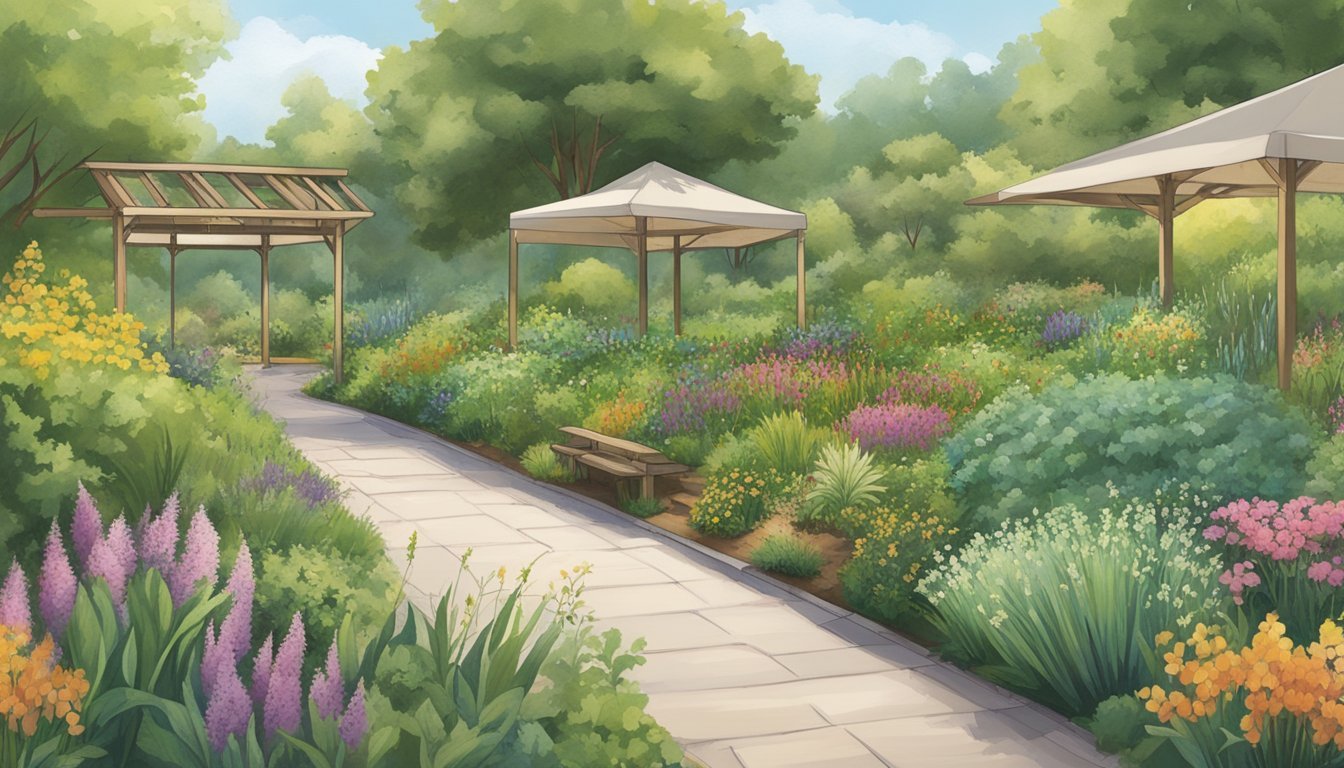Driftless Area Native Edible Plants
A Guide to Foraging and Benefits
The Driftless Area is a unique region spanning parts of Wisconsin, Illinois, Iowa, and Minnesota, characterized by its lack of glacial activity during the last ice age. This has resulted in a landscape with rich biodiversity, including a variety of native edible plants that have sustained wildlife and humans alike for centuries. From the rolling hills of the Loess Hills to the dense woodlands, this area offers foragers a diverse array of plant life.
Diving into the native edible plants of the Driftless Area can uncover a treasure trove of culinary and nutritional delights. Foraging enthusiasts can find morels, oyster mushrooms, and hen of the woods, all of which provide unique flavors and health benefits. These native plants not only contribute to biodiversity but also play a crucial role in the ecosystem by supporting pollinators and other wildlife.
Understanding the importance of native plants in this region can elevate your appreciation for sustainable foraging practices. The Driftless Area Natives initiative highlights how local experts cultivate over 100 different varieties of plants from organically grown seeds to ensure the preservation of this valuable natural heritage. Whether you're exploring local farmers markets or embarking on a foraging adventure, the Driftless Area's native edible plants offer a rewarding experience for both seasoned foragers and newcomers.
Understanding the Driftless Area
The Driftless Area spans parts of Wisconsin, Illinois, Iowa, and Minnesota. This unique region remains untouched by glaciers, resulting in distinct geographical and ecological features rich in biodiversity and native plants.
Geographic Significance
The Driftless Area covers 24,000 square miles. It includes southwestern Wisconsin, northwestern Illinois, northeastern Iowa, and southeastern Minnesota. Unlike surrounding regions, it was not flattened by glaciers during the last Ice Age, leading to hilly terrain, deep valleys, and karst topography, featuring limestone cliffs and sinkholes. This diverse landscape offers natural habitats that support a wide range of plant and animal species.
Ecosystems and Biodiversity
The Driftless Area hosts various ecosystems, from hardwood forests to prairies and wetlands. This diverse environment supports a high level of biodiversity. Ecosystems in this region are characterized by numerous plant species, including many native to the area. Plants like wild columbine and prairie smoke thrive here. The region is also home to a multitude of animal species, including rare and endemic insects and birds, making it a vital area for conservation.
Conservation Efforts
Many conservation efforts focus on preserving the Driftless Area's unique ecosystems and biodiversity. Organizations and local communities work to maintain habitats through land restoration, invasive species control, and sustainable land management practices. Initiatives include re-establishing native plant species and protecting waterways from pollution. These efforts are critical to sustaining the region's natural heritage and ensuring that the unique flora and fauna of the Driftless Area continue to thrive.
Flora of the Driftless Area
The Driftless Area, defined by its unique topography, harbors a rich variety of native plants. This region is characterized by its unglaciated landscape, which provides diverse habitats for a wide range of flora. Here, you will find numerous native, edible plants, some of which are threatened, alongside distinctive plant community types.
Common Native Edible Plants
The Driftless Area boasts an array of edible plants integral to both ecology and traditional foraging practices. Among the most notable are wild berries such as blackberries, raspberries, and elderberries. These fruits provide essential nutrients and serve as important food sources for wildlife.
Nutritious greens also populate this region, including ramps (wild leeks), which are celebrated for their distinct flavor and versatility in cooking. Milkweed and nettles are also common and can be harvested for their edible shoots and leaves.
Mushrooms form another crucial component of the Driftless Area's edible flora. Species such as morels, chanterelles, and chicken of the woods thrive in the woodland areas, providing foragers with delicious and nutritious options.
Threatened Species
Despite the rich biodiversity, several plant species in the Driftless Area face threats. Prairie bush clover (Lespedeza leptostachya) and eastern prairie fringed orchid (Platanthera leucophaea) are examples of plants experiencing habitat loss and decreased population numbers.
The karner blue butterfly relies on the wild lupine (Lupinus perennis), a plant whose decline directly affects the butterfly's survival. Conservation efforts are critical to preserve these species and their habitats.
Equally important are efforts to safeguard biodiverse prairies and savannas, which house many imperiled plant communities. These actions help ensure the sustainability of these ecosystems for future generations.
Plant Community Types
Distinct plant communities characterize the Driftless Area. Oak savannas and prairies are predominant, featuring a mixture of wildflowers, grasses, and perennials. These landscapes not only support a wide range of species but also play crucial roles in maintaining soil health and preventing erosion.
Wetlands and floodplain forests add to the region's diversity, sustaining unique plant assemblages adapted to soggy conditions. Species such as sedges, cattails, and various types of willows thrive here, making these areas hotspots for biodiversity.
In upland areas, oak-hickory forests are common, composed predominantly of white oaks and shagbark hickories. These woodlands support a diverse understory of shrubs and herbaceous plants, contributing to the intricate web of native plant communities in the Driftless Area.
Foraging and Ethical Considerations
When foraging in the Driftless Area, individuals must prioritize safety, sustainability, and conservation to ensure the preservation of the ecosystem. This involves understanding best practices for plant identification, harvesting techniques, and respecting the natural environment.
Foraging Guidelines
Foragers should always positively identify plants before harvesting. Misidentification can lead to consumption of harmful plants. Using multiple sources such as field guides or expert consultations can help ensure accuracy. It's advisable to carry a field guide with full-color photos.
Proper tools, like clippers and bags, are essential. Collecting plants using appropriate methods prevents damage to surrounding flora. Foragers should also educate themselves on which parts of the plant are edible - leaves, roots, seeds, or fruits - and harvest accordingly.
Harvesting should be done away from polluted areas like roadsides or industrial sites to avoid contamination. Additionally, it's vital to follow local regulations and obtain necessary permits when required. Respecting private property and obtaining landowner permission is also imperative.
Sustainable Practices
Sustainability in foraging supports long-term availability of native plants. Foragers should adhere to ethical practices, such as taking only what they need and leaving plenty for wildlife and plant regeneration. Overharvesting can lead to the depletion of plant populations.
Rotating harvesting locations helps protect specific plant communities. This allows time for plants to recover and maintain their population levels. It is considered good practice to harvest no more than a third of any plant colony, ensuring it can continue to thrive.
Conserving natural habitats by avoiding the destruction of surrounding plants and minimizing soil disturbance is crucial. Foragers should ideally choose abundant and non-threatened species. Sharing knowledge about sustainable foraging with others helps promote conservation efforts.
Culinary Applications of Native Plants
Native edible plants offer a rich diversity of culinary uses, from enhancing flavors in traditional dishes to providing vital nutrients. Below are the ways in which these plants can be utilized in cooking and their nutritional benefits.
Cooking with Wild Plants
Many native plants have unique flavors and textures that can enhance a variety of dishes:
Dandelion Leaves: These can be used in salads or sautéed. They have a slightly bitter, earthy flavor.
Elderberries: Often made into syrups, jams, and wine. They have a sweet-tart taste.
Wild Bergamot: The leaves and flowers can be used in teas, adding a minty, oregano-like flavor.
Nuts: Such as acorns and hazelnuts, can be roasted or ground into flour for baking.
Some wild plants, including pawpaw fruit and persimmons, can be turned into desserts like pies and puddings. Sage, native to Kentucky, adds aromatic qualities to meats and soups.
Nutritional Information
Dandelion Leaves: High in vitamins A, C, and K, along with calcium and iron. They provide antioxidants and aid in digestion.
Elderberries: Rich in vitamin C, dietary fiber, and antioxidants. They support immune function and have anti-inflammatory properties.
Wild Bergamot: Contains vitamins A and C. It has antimicrobial properties and can help with digestion.
Nuts: Valuable source of healthy fats, protein, and essential minerals. Hazelnuts, for example, are rich in vitamin E and magnesium.
Including these plants in the diet can offer numerous health benefits, making them excellent additions to various culinary creations.
Health Benefits of Native Plants
Native plants in the Driftless Area offer numerous health benefits, ranging from medicinal properties to nutritional value. Key native edible plants such as Wild Bergamot and Elderberries contribute significantly to these benefits.
Medicinal Uses
Wild Bergamot, also known as bee balm, has been traditionally utilized for its antibacterial and antiseptic properties. It has been known to treat mouth and throat infections when made into a tea. Furthermore, its essential oils can relieve minor skin irritations.
Elderberries are rich in antioxidants and vitamin C, crucial for boosting the immune system. They are often used in syrups and tinctures to combat colds and flu. Native communities have long valued Elderberries for reducing inflammation and supporting respiratory health.
Preparation and Usage
Wild Bergamot can be dried and used to make teas or topical pastes. The fresh leaves and flowers can also be added to salads and other dishes for a minty flavor. It's important to harvest Wild Bergamot sustainably, ensuring the plant population remains healthy.
Elderberries should be cooked before consumption as raw berries can cause digestive issues. They can be boiled with sugar to make syrups, jams, and jellies. The berries can also be dried for later use in teas or baking. Handling Elderberries with care and knowledge ensures the maximum health benefits are derived safely.
By incorporating these native plants into their diet, individuals can enjoy both their health benefits and unique flavors.
Creating a Native Plant Garden
Establishing a native plant garden in the Driftless Area enhances biodiversity. This approach supports local wildlife, conserves water, and provides perennial food sources.
Garden Design
Effective garden design is essential for a thriving native plant garden. Begin by assessing the garden’s environmental conditions, including soil type, sunshine, and existing vegetation. Native plants often thrive in conditions mimicking their natural habitats.
Plant Grouping: Arrange plants by their water and sunlight needs. For example, place sun-loving species in areas that receive full sun and shade-tolerant plants in more sheltered spots.
Layering: Use a layered approach with tall, mid-sized, and ground-level plants. This not only creates visual interest but also fosters a more resilient and diverse ecosystem.
Use natural borders and paths to define garden areas. Stone or wood materials can help reinforce the garden’s structure while maintaining an organic feel.
Selecting the Right Plants
Choosing the right native plants ensures the garden's success. Focus on species indigenous to the Driftless Area, such as prairie dropseed, wild bergamot, and American cranberry.
Prairie Dropseed: Ideal for sunny areas, providing excellent ground cover.
Wild Bergamot: Attracts pollinators like bees and butterflies and thrives in full sun.
American Cranberry: Grows well in moist, acidic soil, offering both ornamental beauty and edible fruit.
Consult local resources like Driftless Area Natives for organically grown plants from local foundation seed. This ensures the plants are well-adapted to the regional climate and soil conditions.
Maintenance Tips
Maintenance is vital to sustain the health and beauty of a native plant garden. Regularly monitor soil moisture levels to ensure plants receive adequate water, especially during dry periods. Use mulch to retain soil moisture and suppress weeds.
Pruning and deadheading promote new growth and enhance plant appearance. In addition, leaving plant material over winter provides shelter and food for wildlife.
Pest and Disease Control: Natural methods are preferred. Introduce beneficial insects like ladybugs to manage pests, and avoid chemical treatments that can harm the ecosystem.
By following these guidelines, a native plant garden can flourish, contributing to local biodiversity and sustainability. The combination of thoughtful design, suitable plant selection, and diligent maintenance creates a thriving, enduring landscape.
Economic and Environmental Impact
In the Driftless Area, native edible plants contribute significantly to both the local economy and environmental sustainability. Focusing on their cultivation and conservation highlights the balance between development and preservation of biodiversity.
Impact on Local Economy
Native edible plants provide economic benefits by promoting local agriculture and supporting small farmers. These plants require fewer inputs like fertilizers and pesticides, reducing costs for growers. They can also attract tourism, with visitors eager to experience and purchase unique, locally sourced foods.
Local markets benefit from the sale of these plants, boosting the region's economy. Farming practices that emphasize native species create jobs and stimulate the local food industry, from cultivation to distribution.
Moreover, the culinary uniqueness of these plants can lead to the creation of niche markets. Restaurants and food producers can offer exclusive dishes and products, enhancing the local food scene and drawing food enthusiasts.
Development vs. Preservation
Development often poses a threat to the existence of native plant species. Land-use changes and urban expansion can lead to habitat destruction, impacting biodiversity and the availability of these plants. Conservation efforts are crucial to maintaining the ecological balance of the Driftless Area.
Preservation of native plants involves sustainable agriculture practices that prioritize minimal environmental impact. This includes avoiding chemical inputs and applying traditional knowledge in plant cultivation.
Balancing development with conservation ensures that economic growth does not come at the cost of environmental health. Strategies such as protected areas, sustainable harvesting methods, and community-led conservation programs can help protect these valuable plant species while supporting economic development.
Educational Resources
To learn about native edible plants in the Driftless Area, several resources are available, which include field guides, books, workshops, and courses that offer hands-on learning experiences and in-depth knowledge.
Field Guides and Books
Field guides and books offer detailed descriptions of native plants. These resources often include images and information on the edible parts of each plant, which is crucial for foragers.
A popular book for this region is "Edible Wild Plants of the Midwest" by John Kallas, which offers comprehensive information on plant identification and usage.
Another useful guide is "Wild Edibles of the Midwest" by Teresa Marrone, featuring color photographs and seasonal foraging tips. These resources create a foundation for understanding which plants are safe and beneficial to consume.
Workshops and Courses
Hands-on workshops and courses can deepen knowledge about native edible plants. They provide practical experiences in foraging, plant identification, and preparation.
Organizations like the Driftless Folk School offer courses focused on native plant use, including foraging walks and cooking demonstrations.
Local nature centers and botanical gardens also host seasonal workshops. These sessions are often led by experts and can cover topics such as sustainable harvesting techniques and traditional uses of plants. These face-to-face learning opportunities are invaluable for gaining practical skills and confidence in identifying and using edible native plants.
Pricing and Availability
Driftless Area Natives offers a variety of native plants, including wildflowers and shrubs. Pricing is determined by container size, and availability changes based on local growing conditions. This section provides insights into finding these plants and estimating gardening costs.
Finding Native Plants for Sale
Driftless Area Natives specializes in plants native to the Driftless Region of Wisconsin, Minnesota, and northern Iowa. Their inventory includes a broad selection of wildflowers, shrubs, sedges, and grasses.
Purchase options are straightforward. For example, 2-inch container plants are priced at $6 each, while 4-inch container plants cost $11 each.
Customers can reserve plants online and opt for local delivery if they order 18 plants or more within a 30-mile radius of Galesville, WI. Ordering is flexible, and plants can be picked up by appointment.
Estimating Garden Costs
Planning the cost of a native plant garden involves several factors, such as the types of plants needed and their quantities. For instance, creating a small garden with 10 wildflowers in 2-inch containers would cost around $60.
For larger projects, like a garden with 20 shrubs in 4-inch containers, the cost would reach $220. Additional costs to consider include soil amendments, garden tools, and possibly delivery fees if the purchase meets the criteria for local delivery.
Using these estimates, gardeners can budget effectively and ensure they have everything needed for their native plant gardens.

